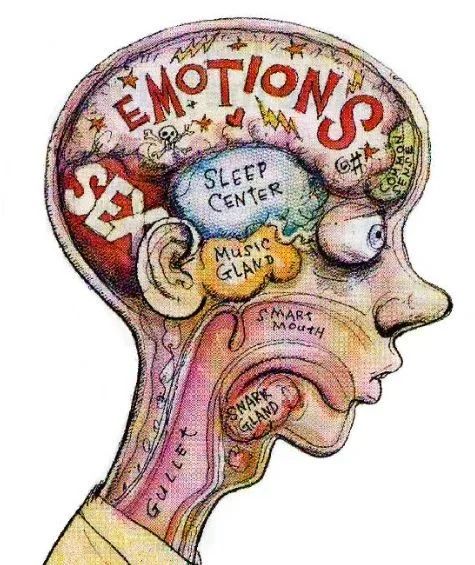The rise of mental issues in 21st century. According to report every person has some mental issues!!
- The rise of mental issues in 21st century
- The rise of mental issues in 21st century cause no.1: Economic Factors and Mental Health:
- The rise of mental issues in 21st century cause no.2: Sociocultural Factors and Mental Health:
- The rise of mental issues in 21st century cause no.3: Environmental Pressures and Mental Health:
- The rise of mental issues in 21st century cause no.4: Technological Advancements in the Digital Age:
- The rise of mental issues in 21st century cause no.5: Changing Family Dynamics in the Modern Era:
- How to cure mental issues (The rise of mental issues in 21st century cure):
- Conclusion(The rise of mental issues in 21st century):
The rise of mental issues in 21st century
In the 21st century, mental health(The rise of mental issues in 21st century) has escalated in prominence. People have been confronting new issues as a result of their contemporary lives and rising advancements in technology, which have driven up the demand for mental health education and support. Factors such as globalization, peer pressure, professional tensions, internal chemical deficiencies, chronic stress, and diminishing family values contribute to tremendous mental stress or disorders(The rise of mental issues in 21st century).
The coronavirus pandemic further exacerbated these issues, leading to increased diagnoses of depression, anxiety, and suicidal ideation. As we navigate this complex landscape, prioritizing mental well-being remains crucial for individuals, families, and societies alike. So lets look briefly the causes of The rise of mental issues in 21st century.
The rise of mental issues in 21st century cause no.1: Economic Factors and Mental Health:

Pic credit: Pinterest
1. Economic Impact on Mental Health:(The rise of mental issues in 21st century)
- Global Perspective: A 2011 report by the Harvard School of Public Health and the World Economic Forum projected that the cost of mental illness worldwide would reach a staggering $6 trillion by 2030.
- Common Disorder: Depression, a prevalent mental health condition, imposes significant economic burdens. Treatment costs and productivity losses per treated person range from $1,180 to $18,313, depending on the condition.
- Workplace Costs: In the U.S., depression-related poor work performance costs companies an average of $5,524 per person annually. This not only affects businesses but also limits career growth and income for individuals.
2. Rent and Student Loan Debt as Stressors:(The rise of mental issues in 21st century)
- Rent Burden: Over 80% of young adults are renters, and median rents have surged over 20% in the past two decades, while median income has barely risen. In 2022, 61% of young adult household heads were cost-burdened, spending more than 30% of their income on housing and utilities.
- Student Loan Debt: The burden of student loan debt adds to economic distress. High debt levels can exacerbate mental health issues, affecting young adults’ well-being and financial stability.
3. Economic Disparities and Mental Health:(The rise of mental issues in 21st century)
- Generation Z: Depression rates among young adults (18-24 years old) from Generation Z exceed those of older adults (25-64 years old). Economic disparities play a role in this difference, impacting professional development and earnings.
- Unfavorable Circumstances: Exposure to adverse economic, social, and environmental conditions increases the risk of mental health conditions. Poverty, violence, inequality, and environmental deprivation all contribute.
The rise of mental issues in 21st century cause no.2: Sociocultural Factors and Mental Health:
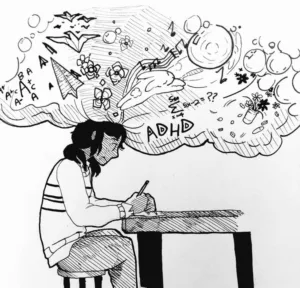
Pic credit: Pinterest
Let’s explore the intricate interplay between sociocultural factors and mental health.
1. Cultural Influence on Mental Health:(The rise of mental issues in 21st century)
- Diverse Perspectives: Culture significantly shapes our attitudes toward mental health. It goes beyond visible aspects like language and clothing. Cultural norms impact how we perceive symptoms, discuss mental health, and seek help.
- Stigma: Stigma varies across cultures. Some view mental health challenges as weakness, while others don’t recognize them as healthcare issues. These misconceptions hinder open discussions and access to help.
2. Access Disparities:(The rise of mental issues in 21st century)
- Minorities and Treatment: Research shows that minorities in the United States are less likely to seek mental health treatment. Only 66% have regular health providers, compared to 80% of white adults. African Americans, in particular, experience higher rates of mental health disorders but seek help less often.
- Cultural Taboos: Cultural stigmas and taboos affect how individuals describe symptoms and their willingness to seek professional assistance.
3. Sociocultural Identities:(The rise of mental issues in 21st century)
- Impact on Symptoms: Sociocultural identities (e.g., sexual identity, race, gender) influence how people perceive themselves and present symptoms. Understanding these identities is crucial for effective treatment
The rise of mental issues in 21st century cause no.3: Environmental Pressures and Mental Health:
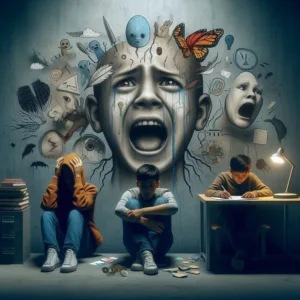
Pic credit: Pinterest
Impact of Environment on Mental Wellness:(The rise of mental issues in 21st century)
- Brain Structure and Function: Research indicates that adverse environments can hinder brain development in children, leading to memory issues, learning difficulties, and behavioral problems.
- Psychological Impact: Your environment influences stress levels, either protecting your psychological health or contributing to mental illness. Key environmental factors include:
- Aesthetics: Cluttered spaces evoke overwhelm, while tidy environments promote calmness. Meaningful colors and objects can boost mood.
- Sensory Factors: Lighting, temperature, sounds, smells, and color palette significantly affect comfort and safety. Harsh lighting, loud noises, and cold spaces impact mental well-being.
- Social Connections: Trustworthy people in your environment create a sense of calm, while conflicts and unreliable interactions cause stress.
- Culture and Values: Connecting with others who share your culture and values prevents feelings of isolation and depression.
The rise of mental issues in 21st century cause no.4: Technological Advancements in the Digital Age:

Pic credit: Pinterest
1. Mobile Mental Health Support:(The rise of mental issues in 21st century)
Technology has revolutionized mental health care, offering new avenues for access, monitoring, and understanding. Here are some key aspects:
- Mobile Devices: Cell phones, smartphones, and tablets empower users to seek help anytime, anywhere. For instance, the 988 Suicide and Crisis Lifeline allows calls, texts, or chats at any hour.
- Sophisticated Apps: Some apps use built-in sensors to track behavior patterns. When deviations occur, they signal the need for assistance, potentially preventing crises.
- Peer Support and Professionals: Apps connect users to peer counselors or healthcare providers, bridging gaps in mental health services.
2. Advantages of Mobile Care Technology:(The rise of mental issues in 21st century)
These innovations offer several benefits:
- Convenience: Ideal for those who struggle with in-person appointments, mobile care allows treatment at any time and place.
- Anonymity: Users can receive treatment privately from their homes.
- Introduction to Care: A crucial first step for those hesitant to seek traditional mental health services.
- Cost-Effectiveness: Many apps are affordable or free.
- Greater Outreach: Reaches remote areas and responds swiftly during crises.
- Interest and Engagement: Makes therapy appealing and accessible.
3. Challenges and Uncertainties:(The rise of mental issues in 21st century)

Pic credit: Pinterest
Despite the promise, challenges persist:
- Regulation: Industry regulation is lacking, leading to uncertainty about app effectiveness.
- Quality Control: Thousands of mental health apps exist, but their efficacy varies.
- Research Gap: More studies are needed to validate their impact.
The rise of mental issues in 21st century cause no.5: Changing Family Dynamics in the Modern Era:
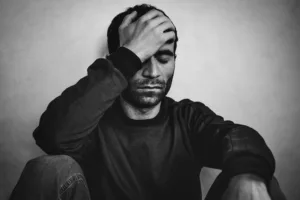
Pic credit: Pinterest
Let’s explore changing of family dynamics in the modern era and its impact on mental health.
1. The Pandemic’s Influence on Family Dynamics:(The rise of mental issues in 21st century)
The COVID-19 pandemic disrupted social interactions, leading many to spend extended periods at home with family rather than friends and colleagues. For adolescents, this shift was particularly pronounced. Instead of the expected increase in peer interactions during adolescence, younger participants experienced fewer positive interactions with peers during COVID-19. Siblings, however, served as buffers against the social effects of quarantine for older adolescents.
2. The Role of Family in Mental Health Recovery:(The rise of mental issues in 21st century)
Family dynamics significantly influence mental health across generations. Genetics, learned behaviors, and family interactions contribute to mental health problems. Early intervention, education, and family support can break this cycle, emphasizing the importance of involving families in promoting positive mental health outcomes.
3. Environmental Pressures and Mental Wellness:(The rise of mental issues in 21st century)
- Stressors: Modern families face stress, anxiety, depression, and social isolation. The demands of contemporary life, access to mental health resources, and stigma surrounding mental illness impact family relationships and individual well-being.
- Communication Patterns: Open communication within families establishes a foundation for positive mental health outcomes. Understanding family dynamics, emotional support, and conflict resolution is crucial
How to cure mental issues (The rise of mental issues in 21st century cure):
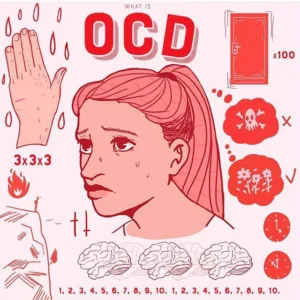
Pic credit: Pinterest
Treating mental health issues involves many approaches according to individual needs. Here are key strategies and remedies:
- Accurate Diagnosis:(The rise of mental issues in 21st century cure no.1)
- Seek professional evaluation to determine the specific mental illness you’re dealing with. A thorough assessment includes physical exams, lab tests, and psychological evaluations.
- Understanding your symptoms helps guide appropriate treatment.
- Classes of Mental Illness:(The rise of mental issues in 21st century cure no.2)
- Neurodevelopmental Disorders: These often begin in childhood and include conditions like autism spectrum disorder and ADHD.
- Psychotic Disorders: Detachment from reality characterizes this class (e.g., schizophrenia).
- Bipolar and Depressive Disorders: Alternating episodes of mania and depression.
- Anxiety Disorders: Excessive worrying and avoidance behaviors.
- Obsessive-Compulsive Disorders: Preoccupations and repetitive thoughts/actions.
- Treatment Approaches:(The rise of mental issues in 21st century cure no.3)
- Medication: Psychotropic drugs can manage symptoms.
- Therapy: Various forms, such as cognitive-behavioral therapy (CBT), help rework thinking patterns.
- Social Support: Connecting with others reduces isolation.
- Education: Learn about your condition and coping strategies.
- Lifestyle Changes: Prioritize sleep, nutrition, and physical activity.
- Complementary Remedies:(The rise of mental issues in 21st century cure no.4)
- Mindfulness Practices: Meditation, yoga, and deep breathing reduce stress.
- Dietary Adjustments: Nutrient-rich foods impact mood.
- Herbal Supplements: Some herbs (e.g., St. John’s wort) may aid mental well-being.
- Physical Activity: Regular exercise positively affects mental health
Conclusion(The rise of mental issues in 21st century):
In conclusion, the 21st century has witnessed a significant surge in mental health challenges. Factors like globalization, professional stress, and diminishing family support contribute to this rise. The COVID-19 pandemic further exacerbated issues, with depression and anxiety increasing substantially. As we navigate this complex landscape, prioritizing mental well-being remains crucial. Let’s continue to support one another, seek professional help when needed, and break down the stigma surrounding mental health.
More visit :https://taazakhobor.in/
More like this:
